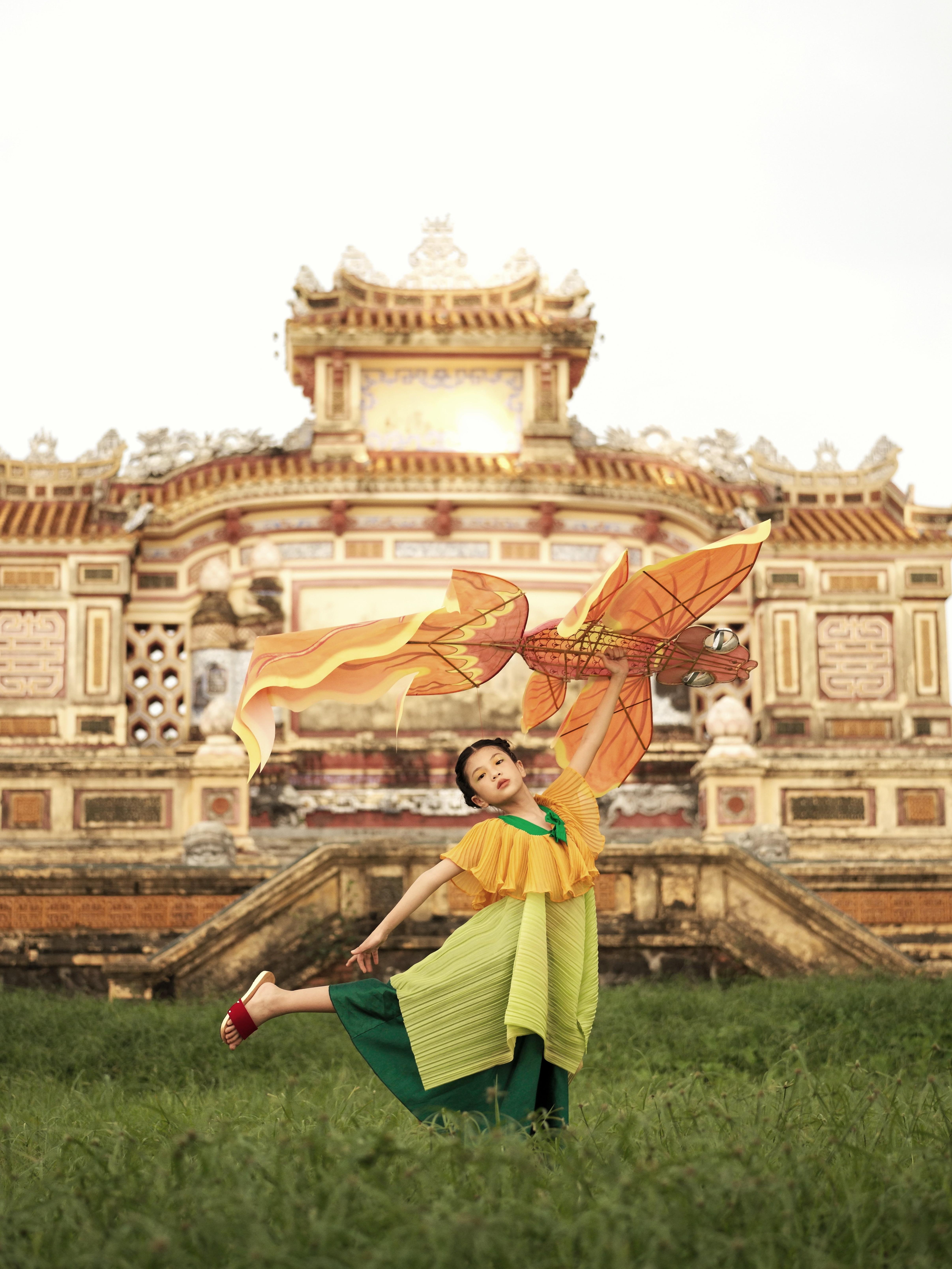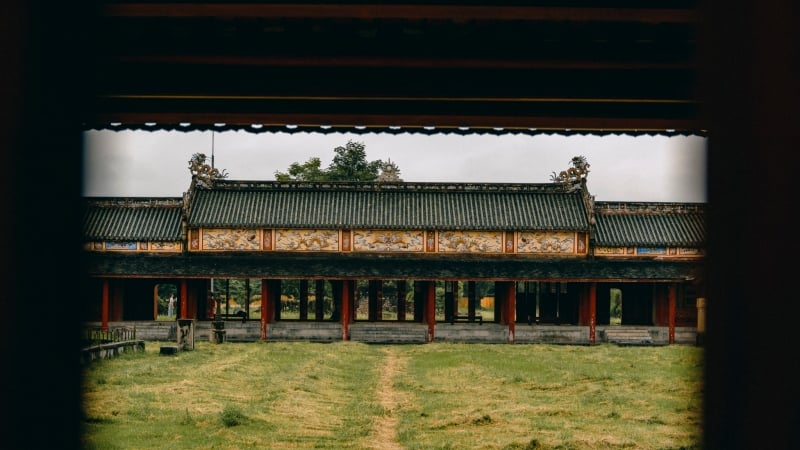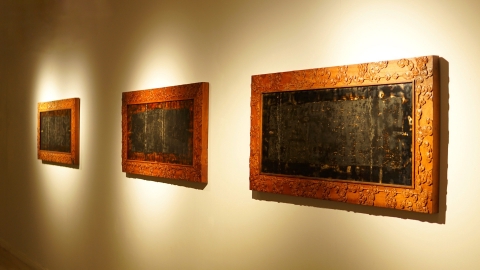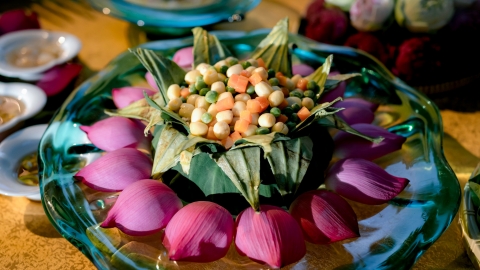The photo series with the theme “Heal The Soul” by child model Ella Bui cleverly depicts unique perspectives, bringing visitors to a Hue that is both modern and youthful, while still retaining its ancient features.
“The photo series is a change in the way of looking at Hue compared to before. It brings a youthful breath from the color of the costume design to the character image, a combination of fresh modernity with the calm, gentle features of Hue”, said Mr. Bui Viet Anh (father of model Ella Bui).
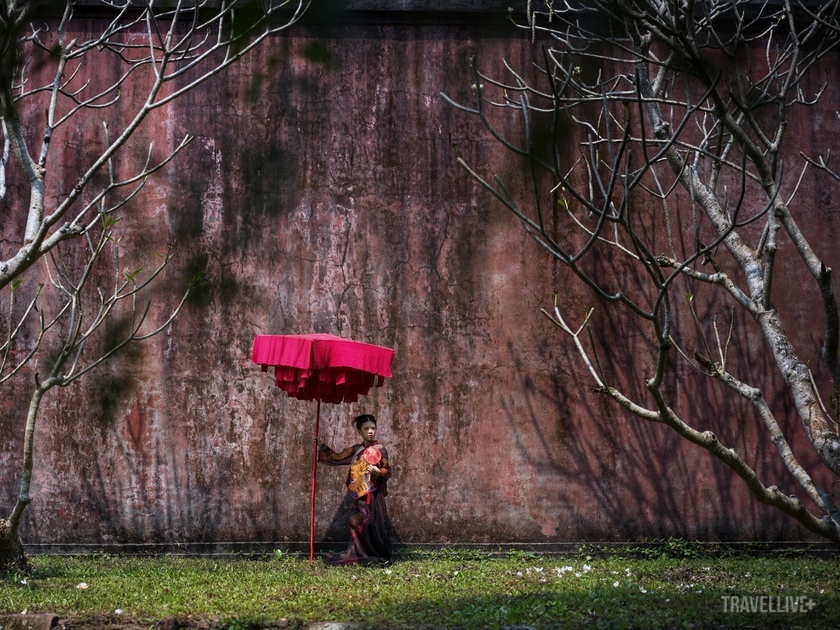
The photo series with the theme “Heal The Soul” by child model Ella Bui cleverly depicts unique perspectives of Hue.
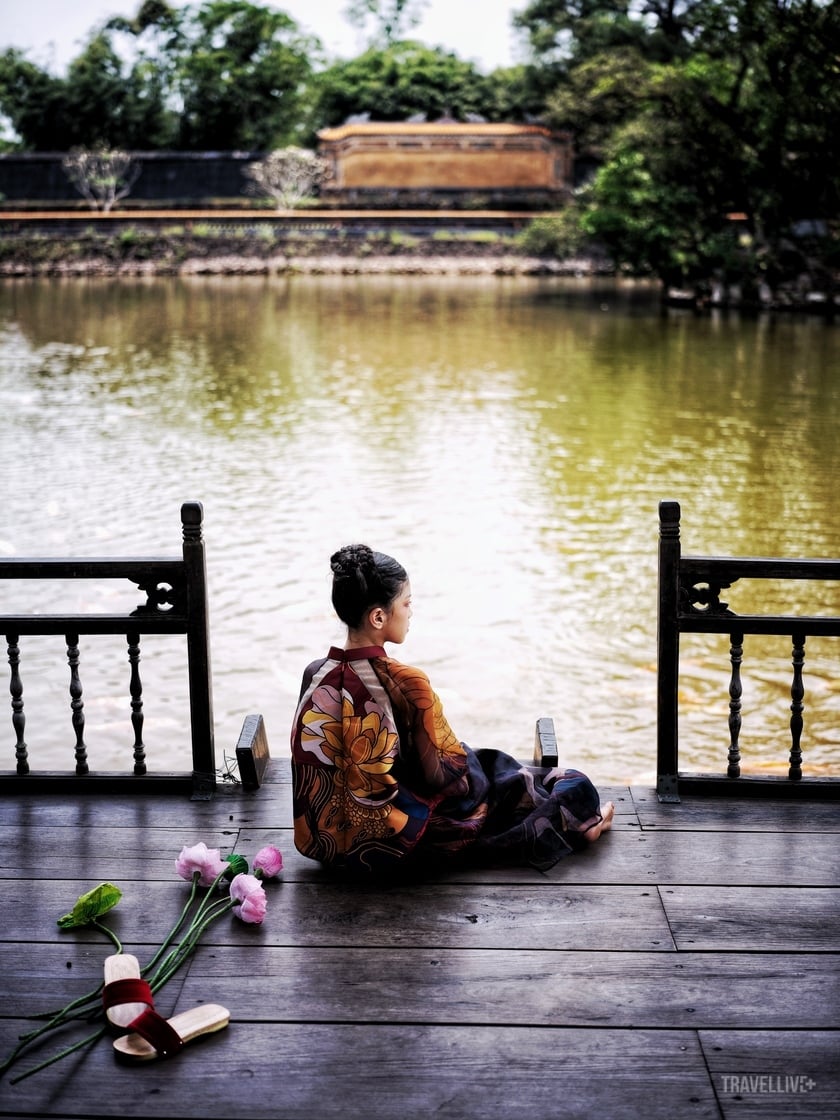
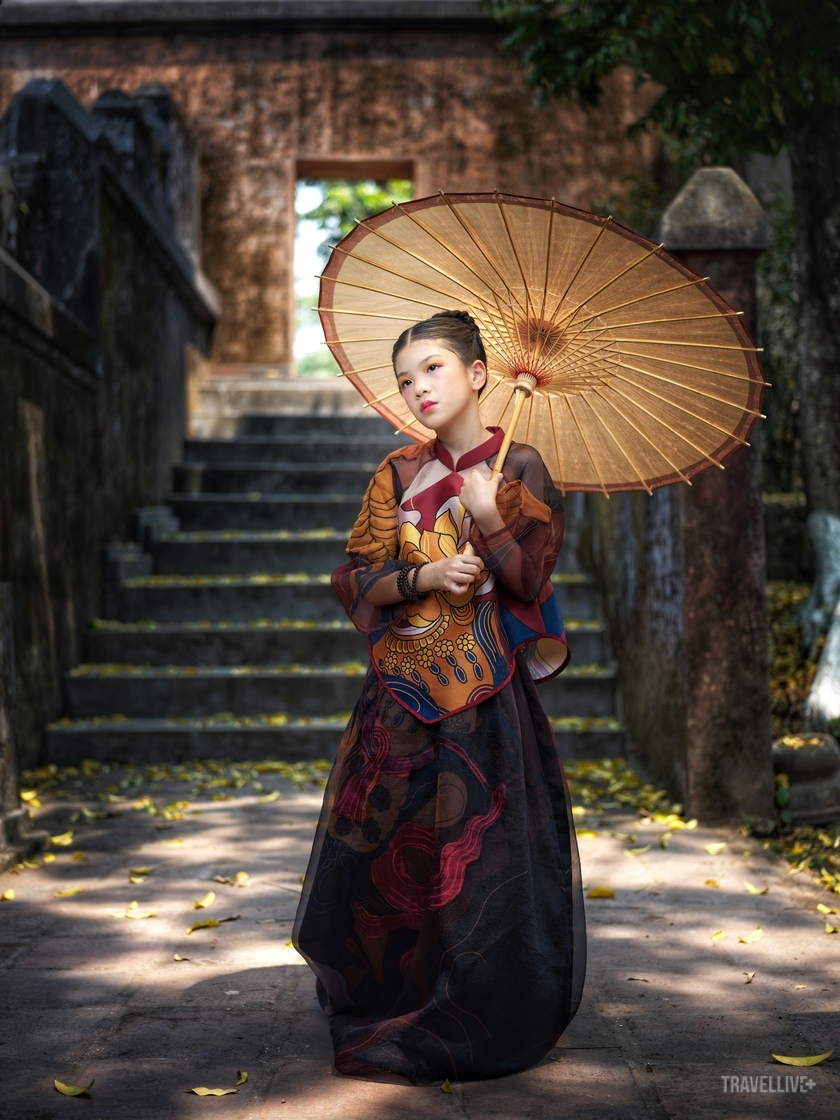

On a bright, vibrant color background, the ancient tombs appear with a completely new look.
Walking in the ancient mossy mausoleums, visitors seem to go back in time, returning to the quiet old Hue. This place preserves long-standing historical and cultural marks, giving visitors a sense of peace.
Hue not only has traditional values but also contains a youthful, modern vitality. The photo series "Heal The Soul" cleverly captures the beauty of the intersection between these two contrasting colors. On a bright, vibrant background, the ancient tombs appear with a completely new look. Modern, youthful costumes are harmoniously combined with the ancient scenery, creating a vibrant and attractive whole. "Heal The Soul" is like a breath of fresh air in the way of looking at Hue, bringing visitors to a youthful, modern Hue that still retains its inherent quiet beauty.
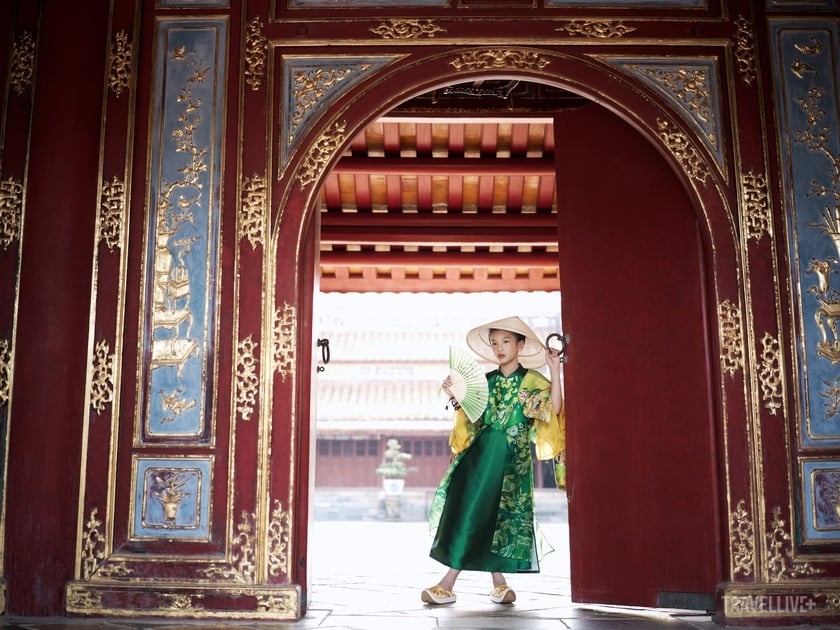
Hue not only has traditional values but also contains a youthful, modern vitality.
Hue is known as a province in the Central Coast, bordering Laos, the East Sea, Quang Nam, Da Nang and Quang Tri. Hue is famous for its poetic, peaceful and gentle beauty. That charm makes anyone want to travel to Hue once in their life. Coming to the ancient capital, visitors can admire the golden palaces, majestic tombs, and historical landscapes, all of which create the unique beauty of this land.
Tu Duc Tomb
Known as the most beautiful architectural work of the Nguyen Dynasty, this is the resting place of King Tu Duc - the longest reigning king among the 13 kings of the Nguyen Dynasty. In the context of social difficulties, foreign invaders attacking, and family feuds, to escape the harsh life, King Tu Duc built the mausoleum as a second palace.
To date, Tu Duc Tomb is considered one of the four most beautiful tombs on the Hue tourist map, recognized by UNESCO as a World Cultural Heritage. At the same time, this is one of the first historical relics in Vietnam to be included in the 3D digital museum within the framework of the Google Arts & Culture project.

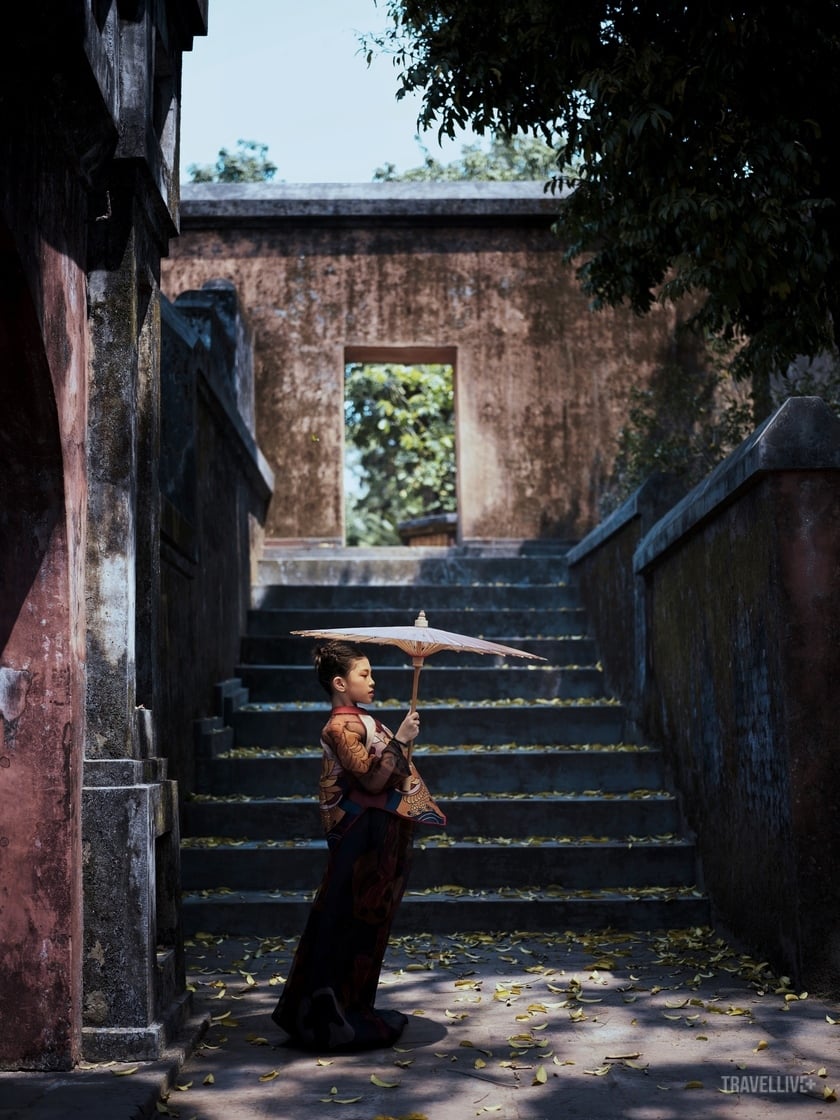
The exterior architecture of Tu Duc Tomb bears the strong imprint of the Nguyen Dynasty, with a harmonious combination of traditional and modern elements.
The architecture of Tu Duc Tomb is considered the most beautiful in the system of tombs of the Nguyen Dynasty kings. Nearly 50 works in the Tu Duc Tomb area on both sides of the palace and the tomb include: Vu Khiem Gate, Khiem Cung Mon, Luong Khiem Palace... Notably, all the names of these works contain the word "Khiem" - meaning respect, humility - one of the virtues valued by Confucian scholars at that time.
Minh Mang Tomb
Minh Mang Tomb, also known as Hieu Lang, is located on Cam Ke Mountain, Huong Tho Commune, Huong Tra Town, Thua Thien Hue Province. It is near Bang Lang intersection, 12 km from Hue city center. Minh Mang Tomb is a complex of historical and cultural relics located in the Hue Imperial Citadel, built from 1829 to 1840 under the reign of King Minh Mang. It is considered one of the most beautiful and typical tombs of the Nguyen Dynasty, expressing the concept of the universe, philosophy of life and filial piety of the Vietnamese people.

Minh Mang Tomb is one of the most beautiful and majestic tombs of the Nguyen Dynasty.
Located in a convenient location, with mountains, rivers and lakes, Minh Mang Tomb has the most majestic and standard architecture under the Nguyen Dynasty and is an attractive destination for tourists from all over the world to visit and admire during their trip to Hue.
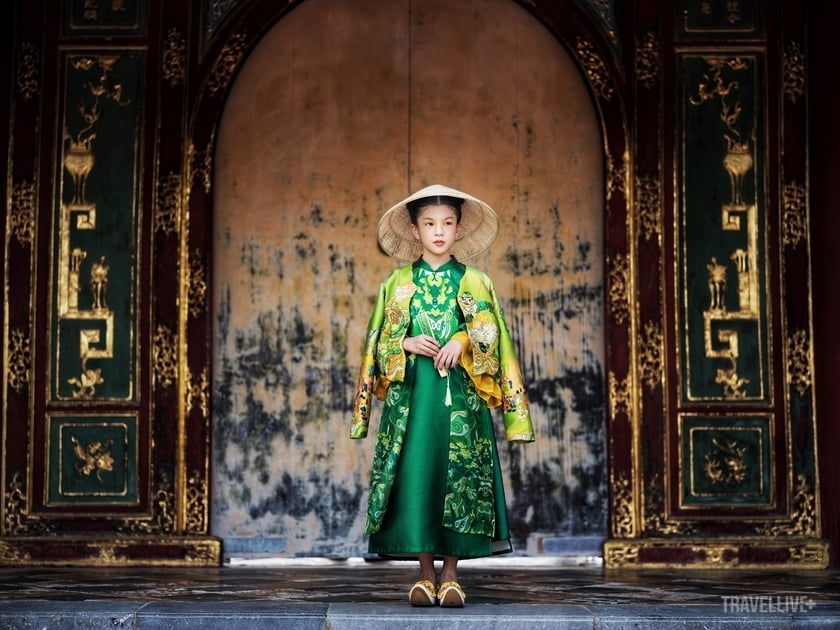

Hue Imperial City
Hue Imperial City is part of the Hue Monuments Complex, bearing the cultural, historical and architectural imprints of the Nguyen Dynasty. UNESCO recognized it as a world cultural heritage in 1993. Hue Imperial City is the place where the Nguyen Kings and the last feudal dynasty of our country lived and worked. This is where not only the royal activities took place, but also the royal festivals, religious ceremonies and important events of the Nguyen Dynasty were held.
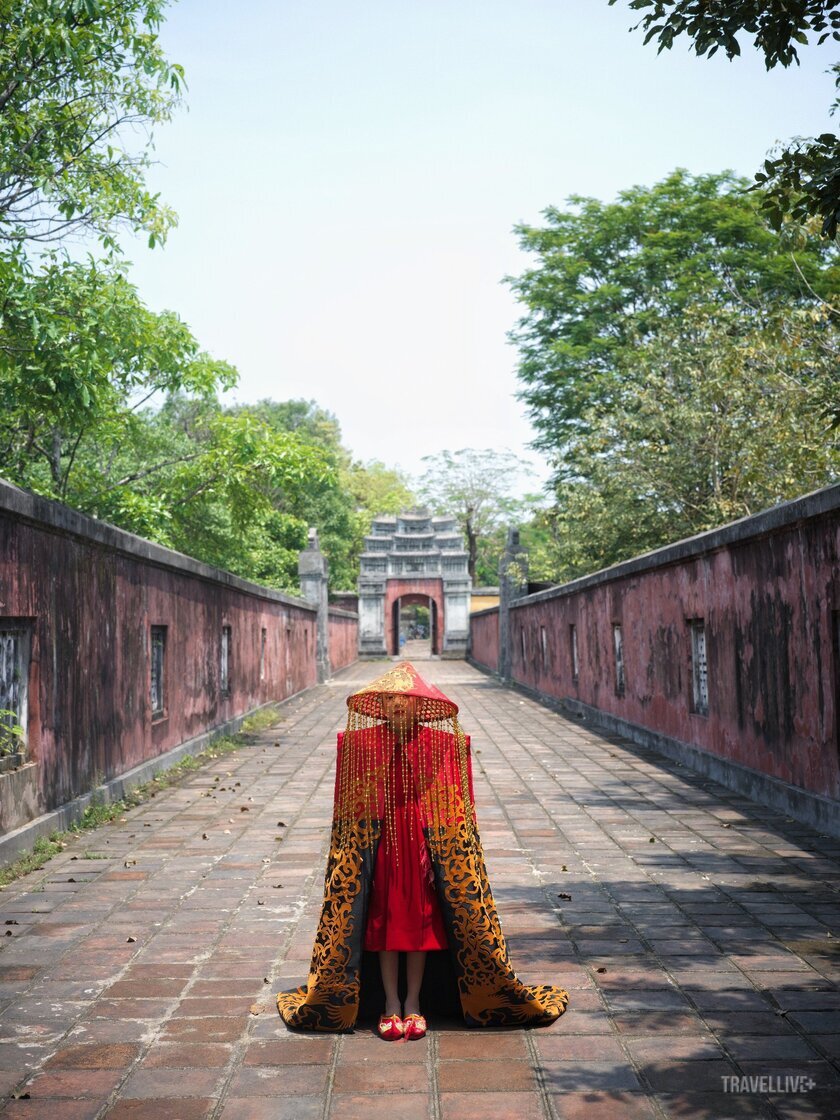
Hue Imperial City is the place where the Nguyen kings and the last feudal dynasty of our country lived and worked.
Hue Imperial City can be considered the largest construction in the history of Vietnam up to now. The architecture of Hue Imperial City bears the strong imprint of the Nguyen Dynasty's royal architectural style with a harmonious combination of traditional and modern elements. The constructions in the Imperial City are built with precious ironwood materials, intricately carved with dragons, phoenixes, and delicate patterns.
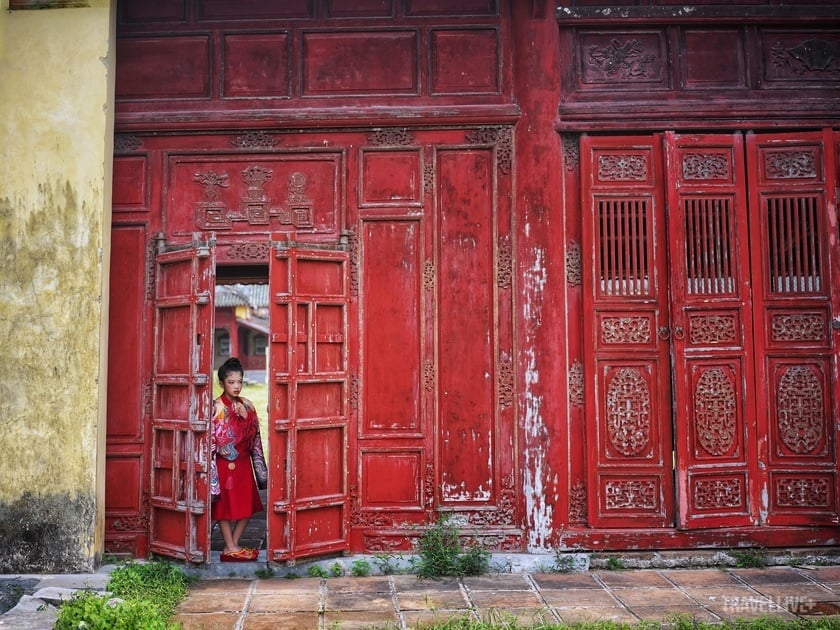
Hue Imperial City can be considered the most massive construction in Vietnamese history up to now.
There are two main areas here: the Imperial City and the Forbidden City, which include many different constructions. The Imperial City area includes Ngo Mon Gate and Thai Hoa Palace. The Forbidden City is an area reserved for the king and the royal family, including Dai Cung Mon, Ta Vu and Huu Vu, Can Chanh Palace, Thai Binh Lau, Dien Tho Palace, etc.
Imperial Citadel
Ngo Mon Gate
Ngo Mon Gate or Ngo Mon Gate is a massive, majestic construction with extremely elaborate, sophisticated and sturdy patterns. Ngo Mon is not only a simple entrance gate but also a representative face of the Hue Imperial City, so it is designed with many layers with a surrounding moat system.
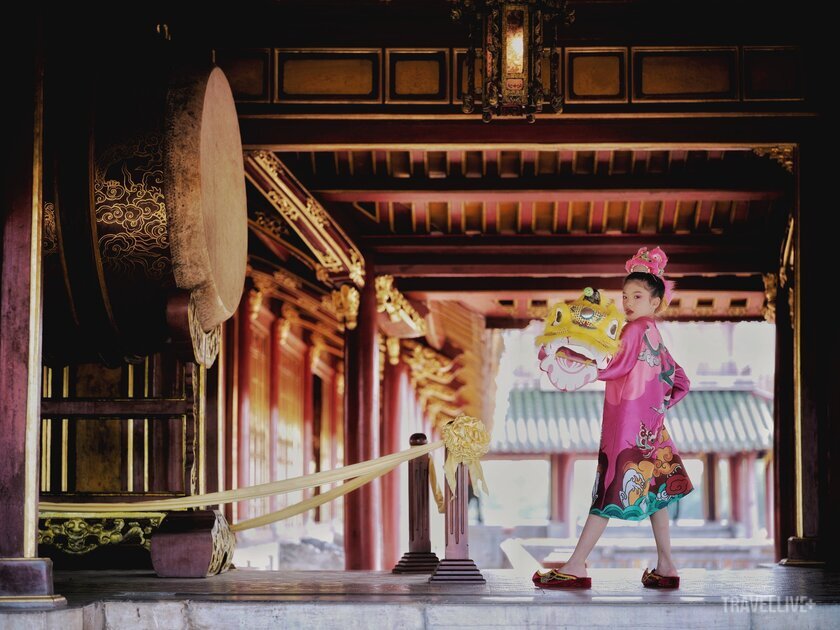
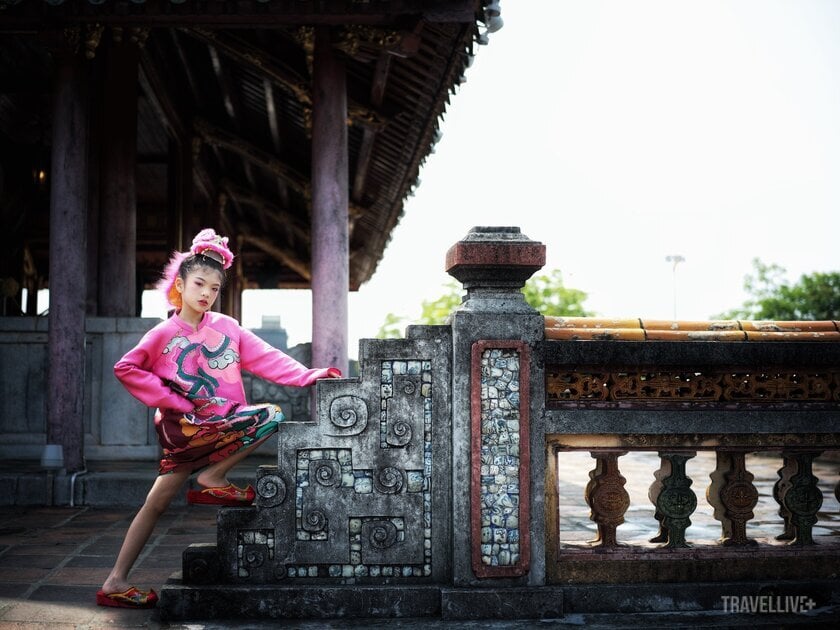
Ngo Mon is one of the most typical relics of the Hue Monuments Complex, recognized by UNESCO as a World Cultural Heritage.
The Ngo Mon Gate of Hue Imperial City faces the south of the citadel. From Ngo Mon, you can see the Perfume River from afar. The Imperial City area will have 5 gates located here, in which the main gate in the middle was for the king, the two side gates were for civil and military mandarins. The remaining area, the two side gates around were for soldiers with elephants and horses accompanying the king to protect and serve the king.
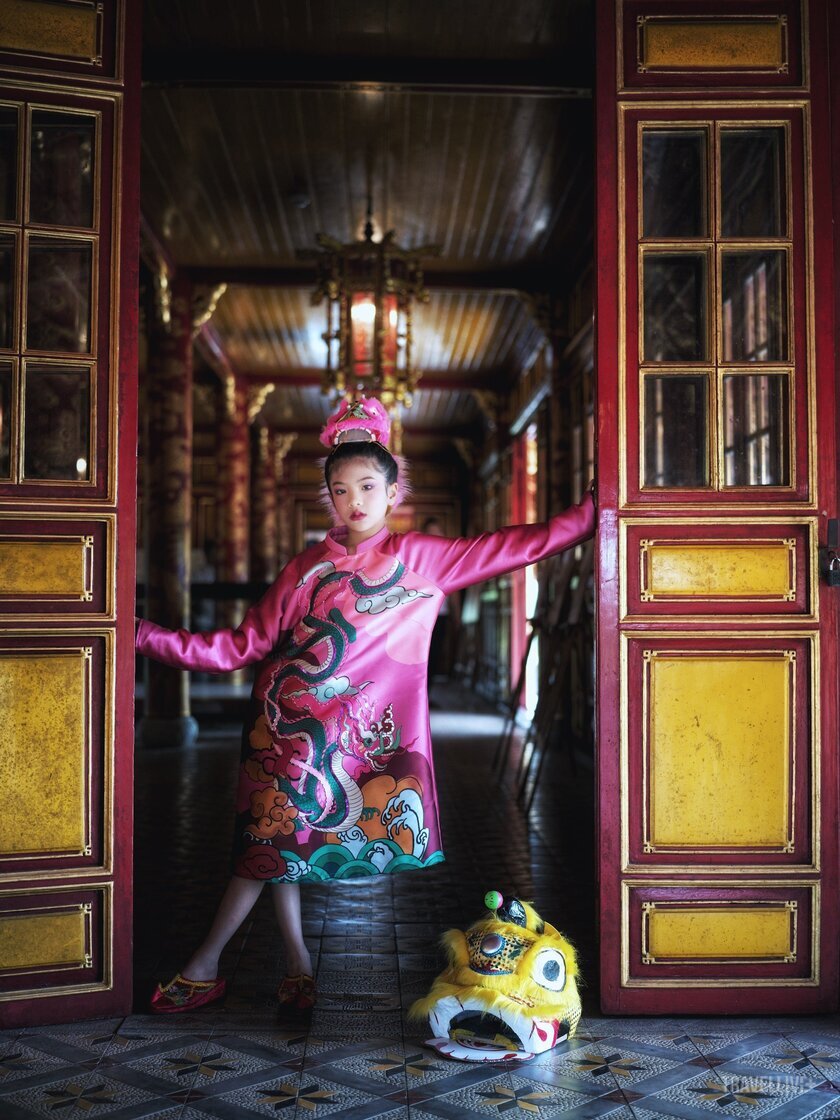
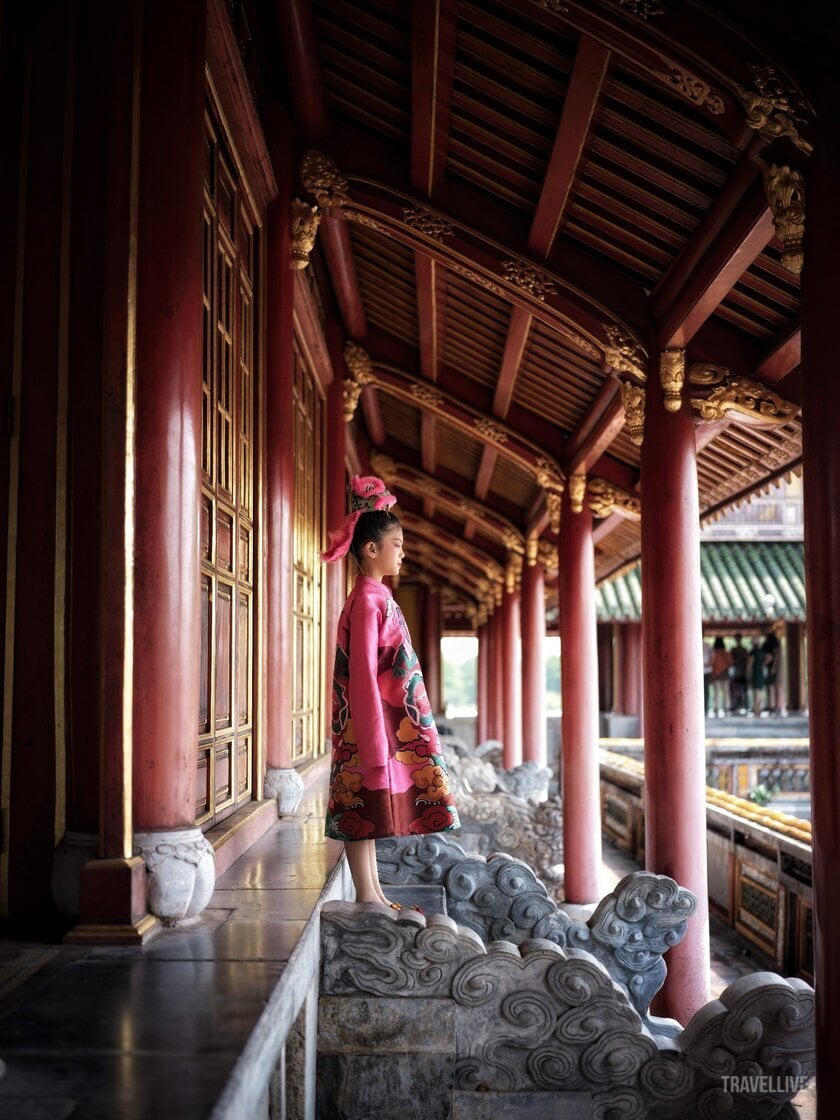
Having gone through nearly two centuries and witnessed many historical events recorded in the nation's records, Ngo Mon Gate still exists over time and has become an outstanding ancient architectural masterpiece, a living witness to many important milestones of the nation's history.
Kien Trung Palace - The once splendid Nguyen Dynasty Palace
Kien Trung Palace is located in Hue Imperial City, built in 1921 under the reign of King Khai Dinh. This was the workplace and residence of King Khai Dinh and King Bao Dai - the last two kings of the Nguyen Dynasty.
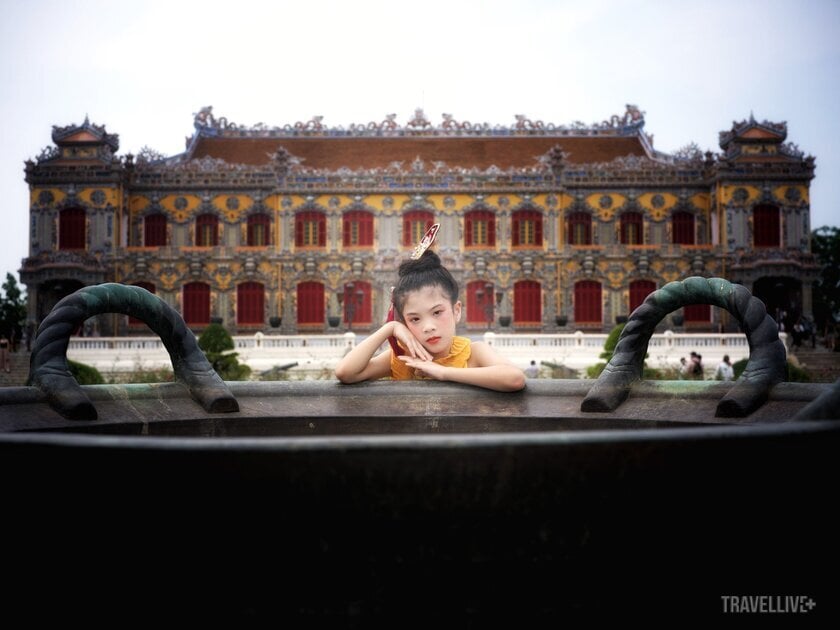
Kien Trung Palace has a strong Indochinese architectural style, a harmonious combination of Vietnamese tradition and Western modernity.
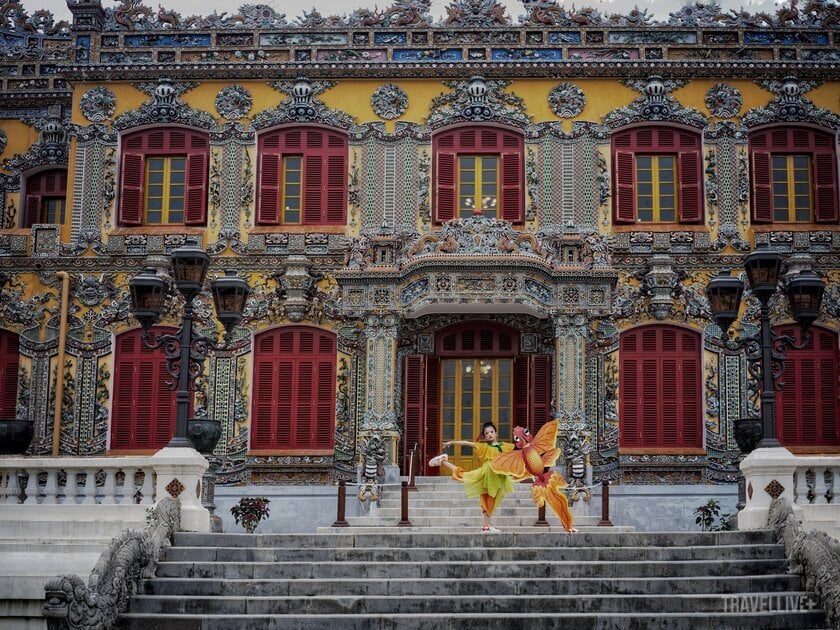
This place preserves many valuable historical artifacts, contributing to recreating the ancient Hue royal life.
Kien Trung Palace was built in a combined East-West architectural style, with the intersection between traditional Vietnamese architecture and modern Western architecture. The palace has an area of 2,020 m2, including 3 main rooms: Front hall, Middle hall and Back hall.
In front of the main hall is a landscape garden. There are three stairs with delicate dragon shapes, visitors can follow the stairs to go up to the temple platform. The main floor is designed with 13 porch doors, 5 doors in the middle and 3 doors on each side. The upper floor area is also designed similarly to the main floor.

The palace has an area of 2,020 m2, including 3 main rooms: Front Palace, Middle Palace and Back Palace.
Duyet Thi Duong - Hue Royal Theatre
Duyet Thi Duong was built in the 7th year of Minh Mang (1826) inside the Forbidden City. This was a place reserved for the King, Royal relatives, mandarins and guests of the court to watch art performances (mainly royal plays), contributing to enriching the cultural and spiritual life of the kings and the Nguyen Dynasty.
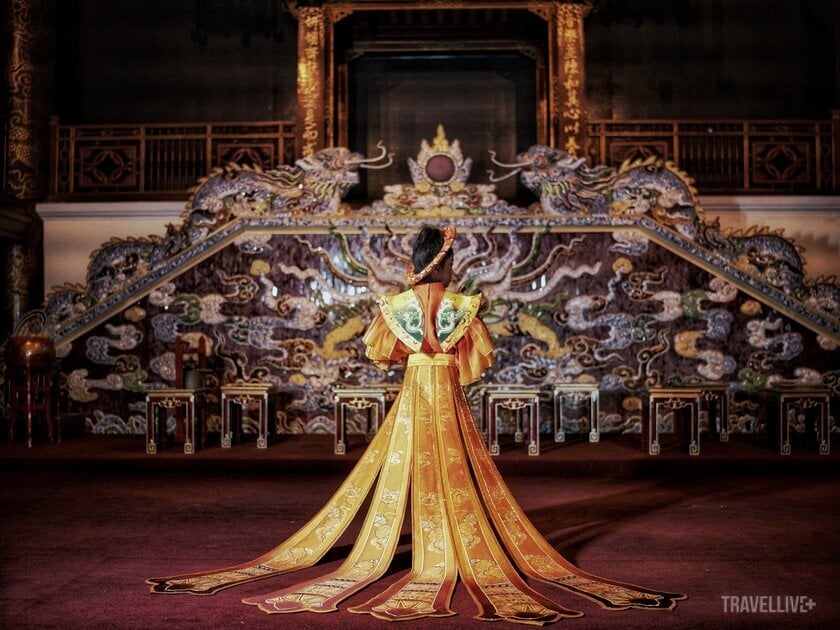
Duyet Thi Duong is one of the oldest theaters in Vietnam, preserving many valuable historical and cultural values.
Duyet Thi Duong has a total area of 11,740 m2. Theater construction area 1,182 m2. The entire theater grounds were previously used to grow rare medicinal herbs. To the right of the theater was the Royal Medicine Institute, where medicines were prepared for the King and the Royal Family. To the left was the Shang Thien Department, where dishes were prepared to serve the King. All were separated from the theater by a wall.
After nearly 200 years, under the impact of harsh nature and the devastation of war, Duyet Thi Duong Theatre has suffered many serious damages and has been restored and repaired many times. From 1995 to 2002, the theatre was completely restored for the last time and officially put into regular operation from March 2003, by the Traditional Royal Theatre of the Hue Monuments Conservation Center.
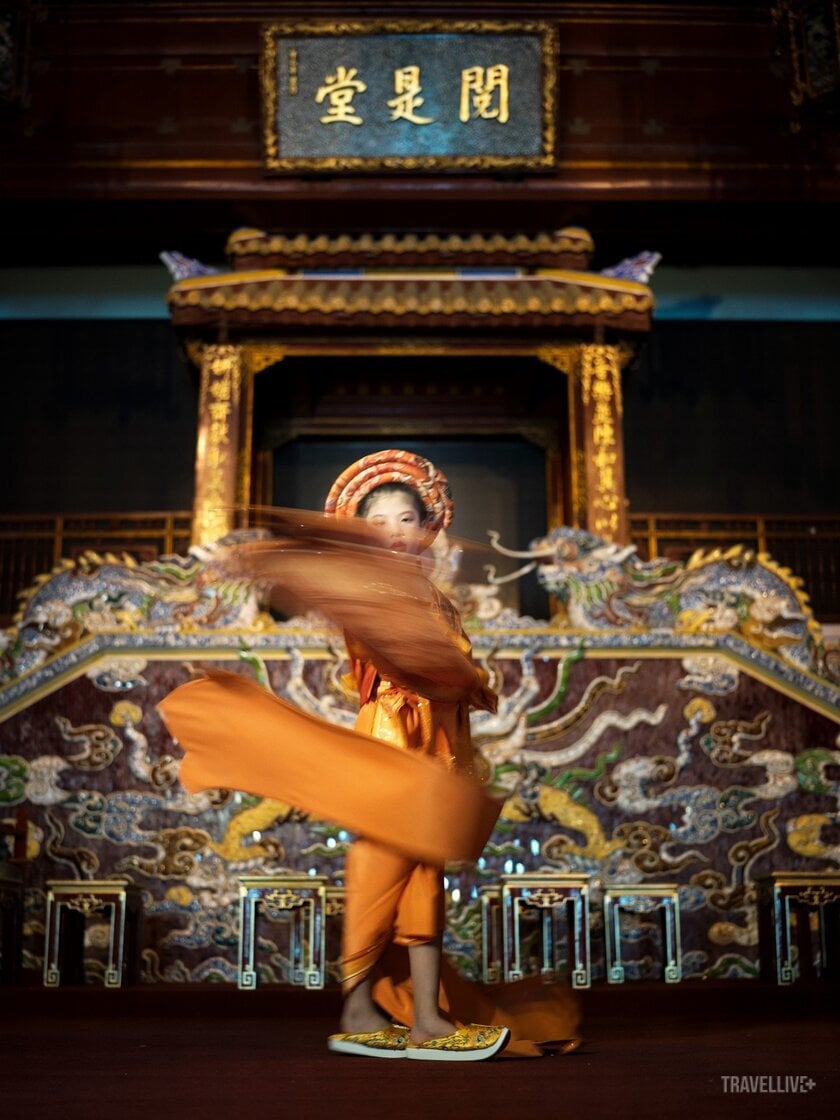
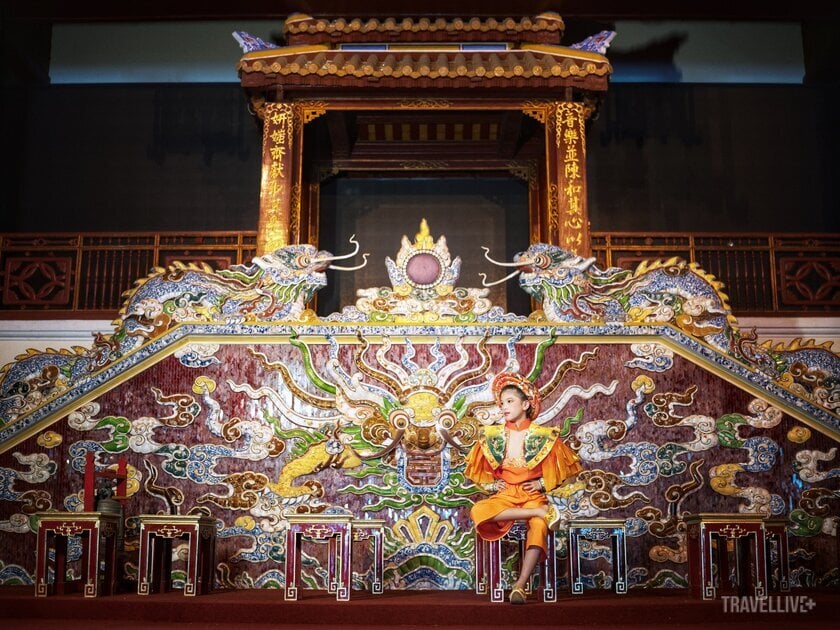
The entire house is made of ironwood, intricately carved with dragon, phoenix, and floral motifs...
Heal The Soul
Model: Ella Bui
Ao Dai: LaSenVu
Camera: Anh Kiet
Photo: Hoang Quan
ArDirection: Bui Viet Anh





